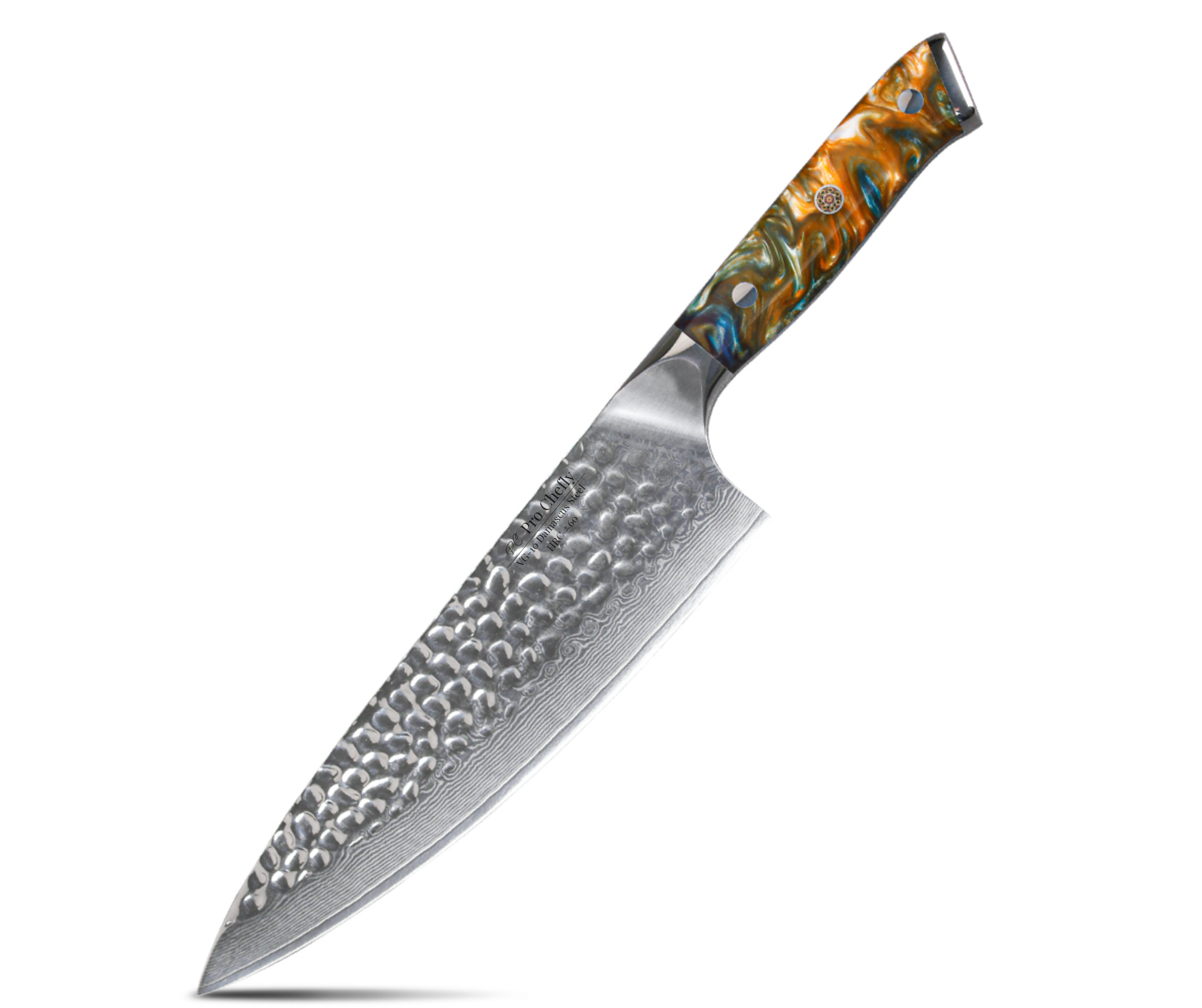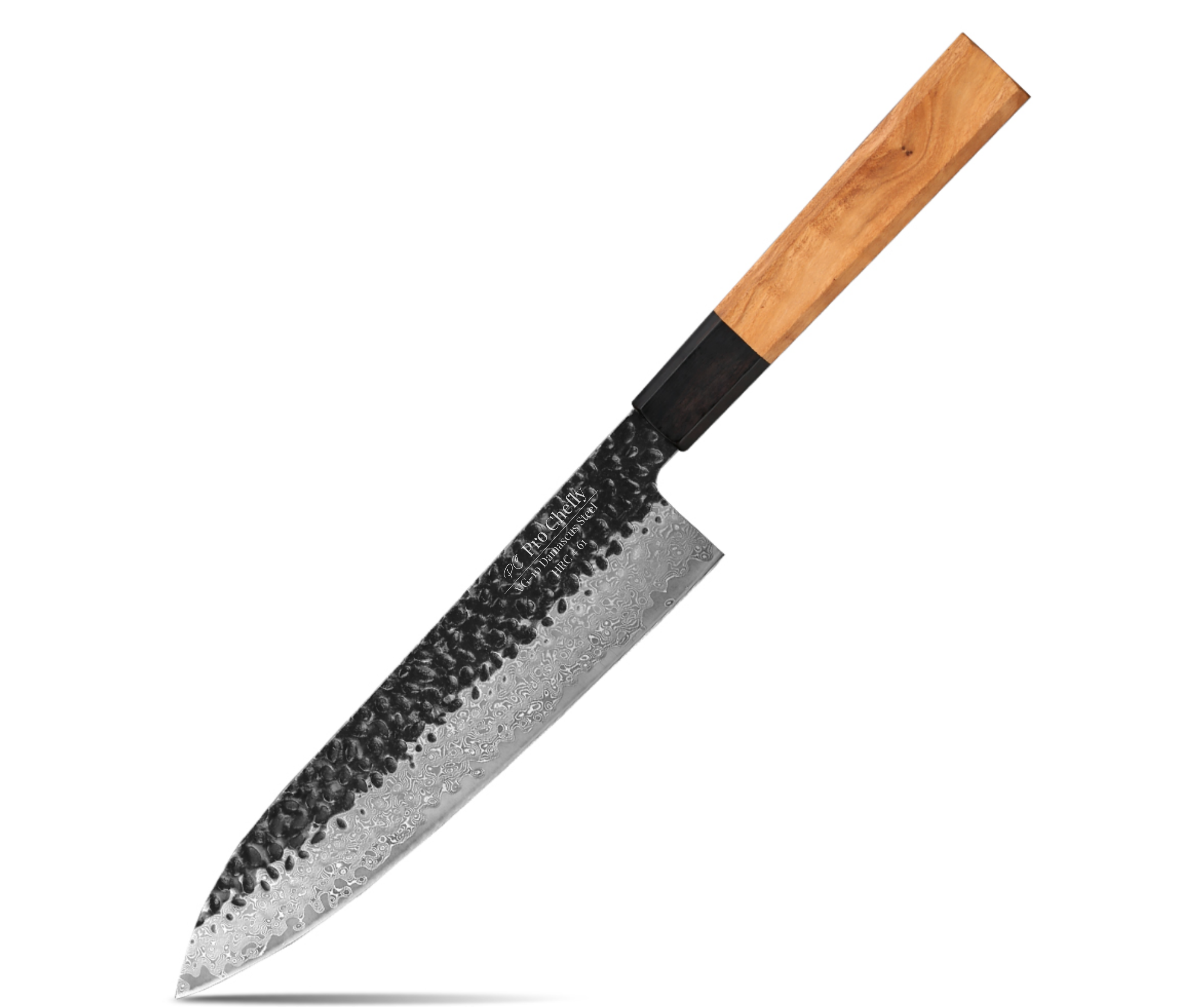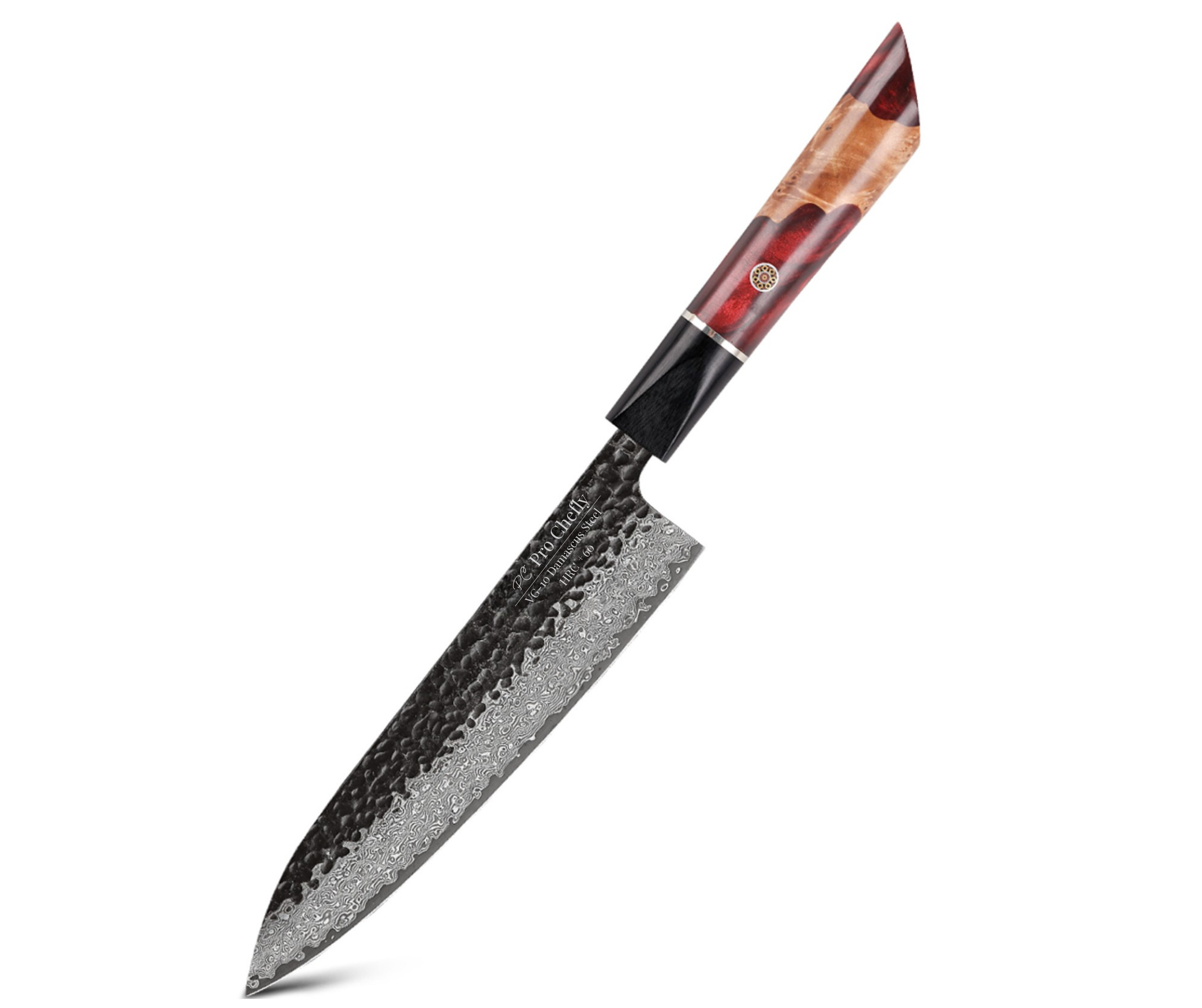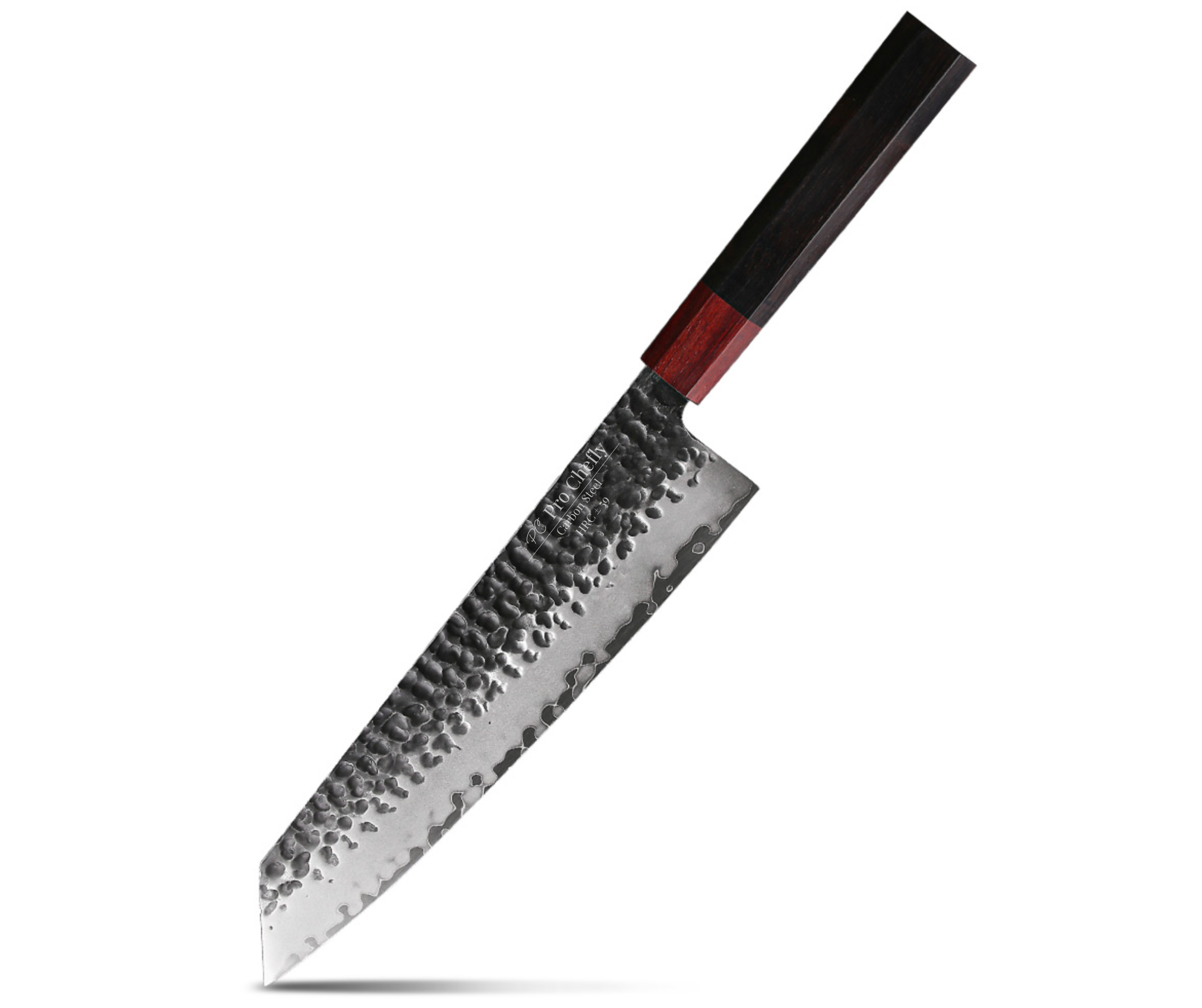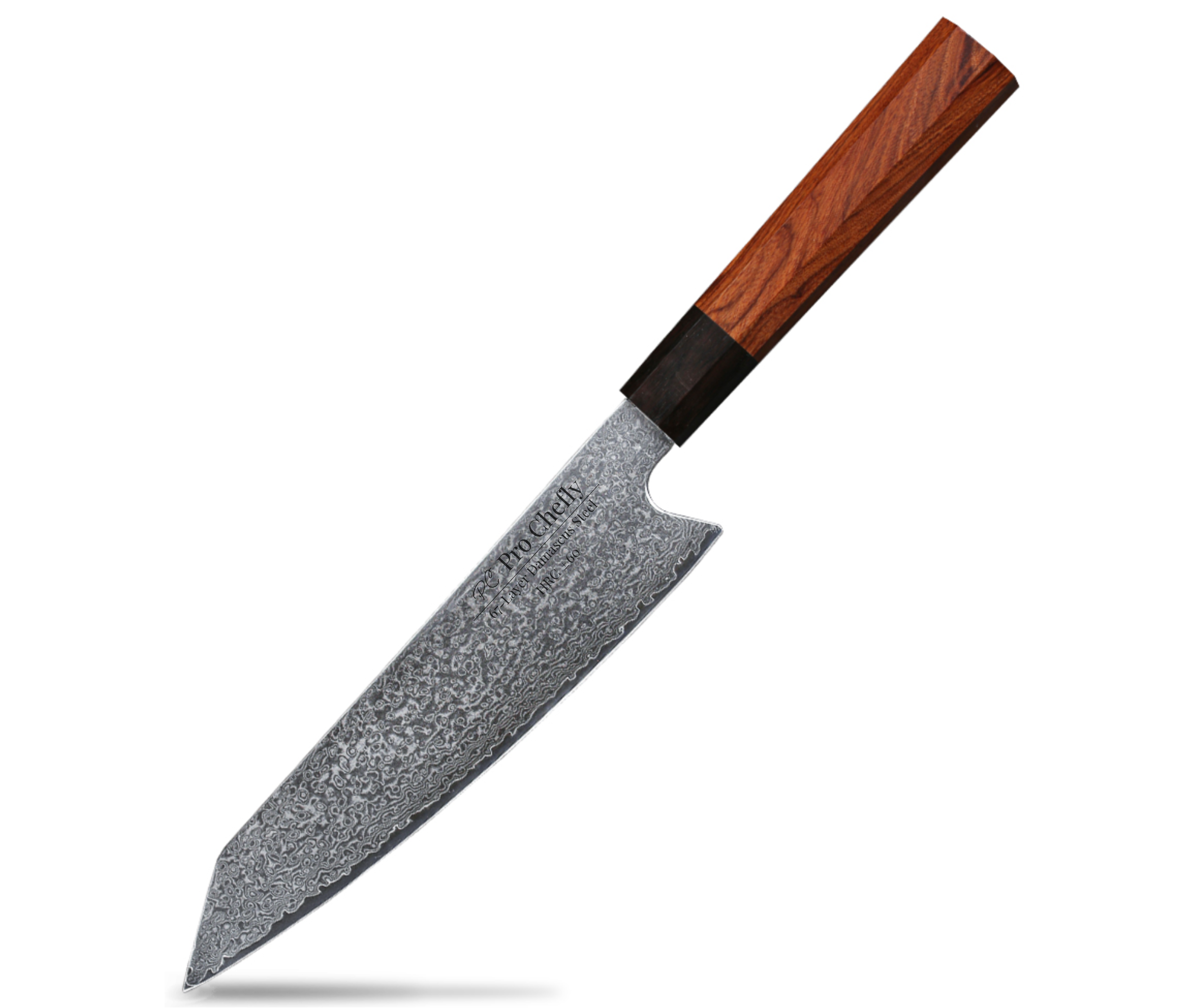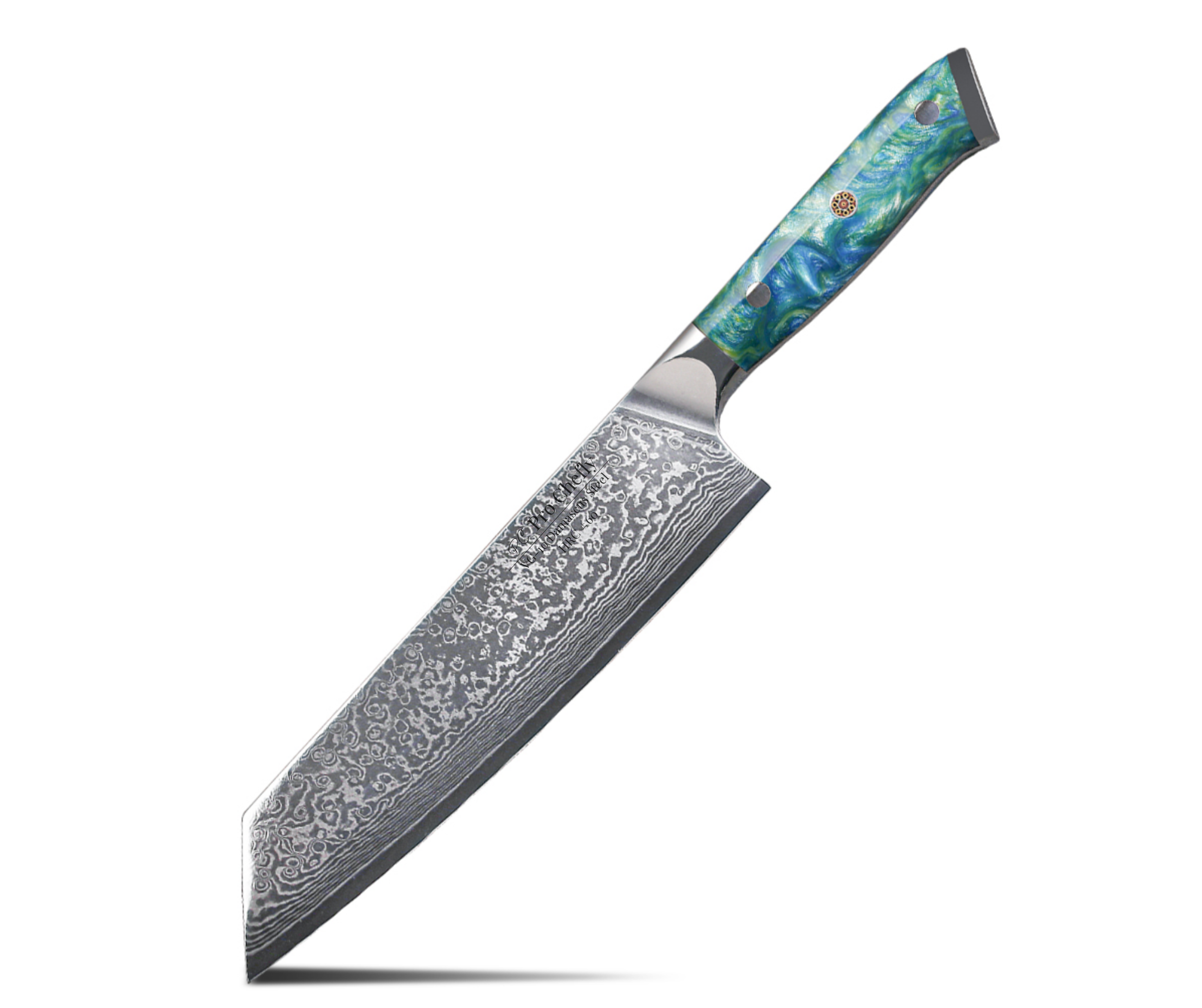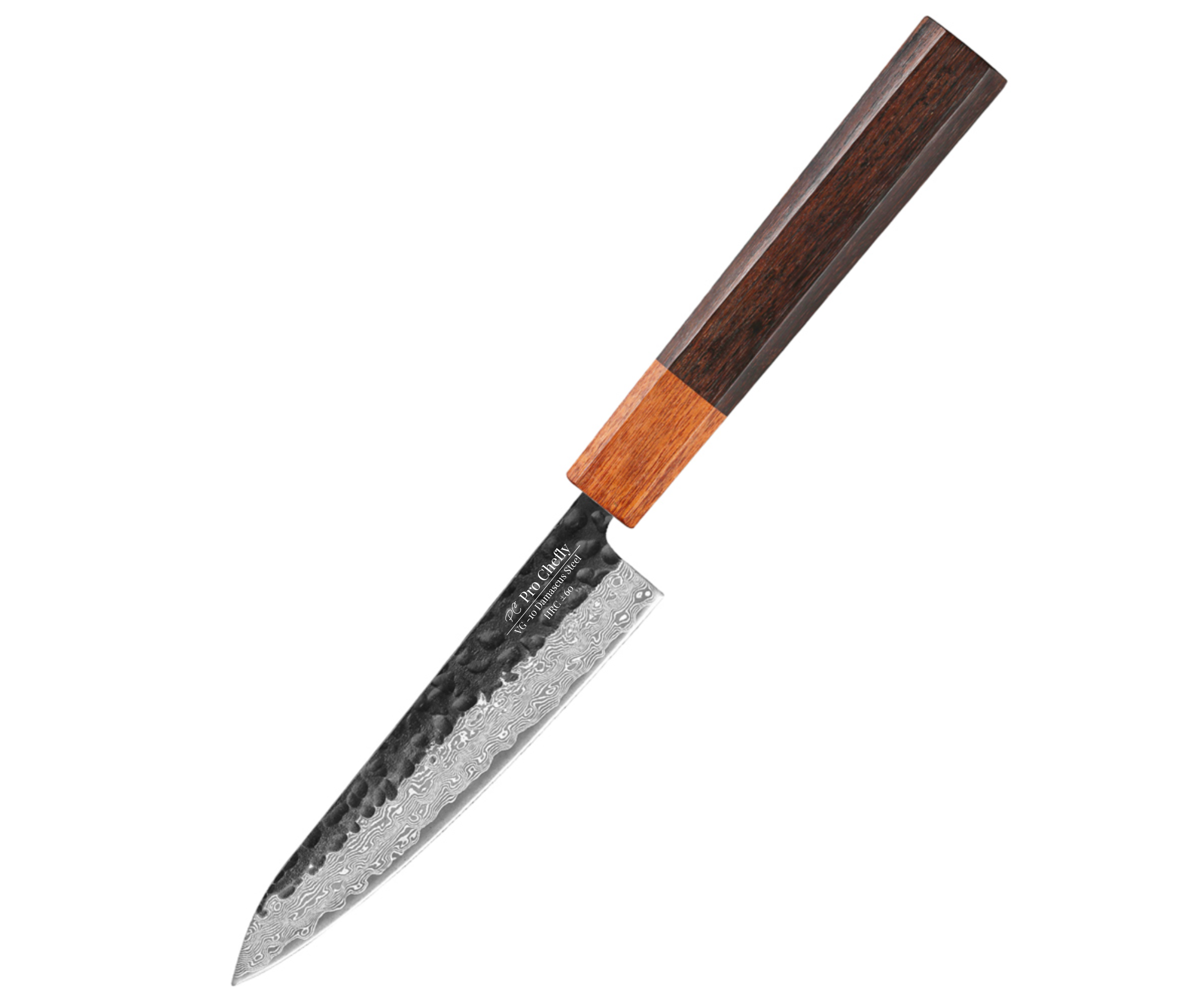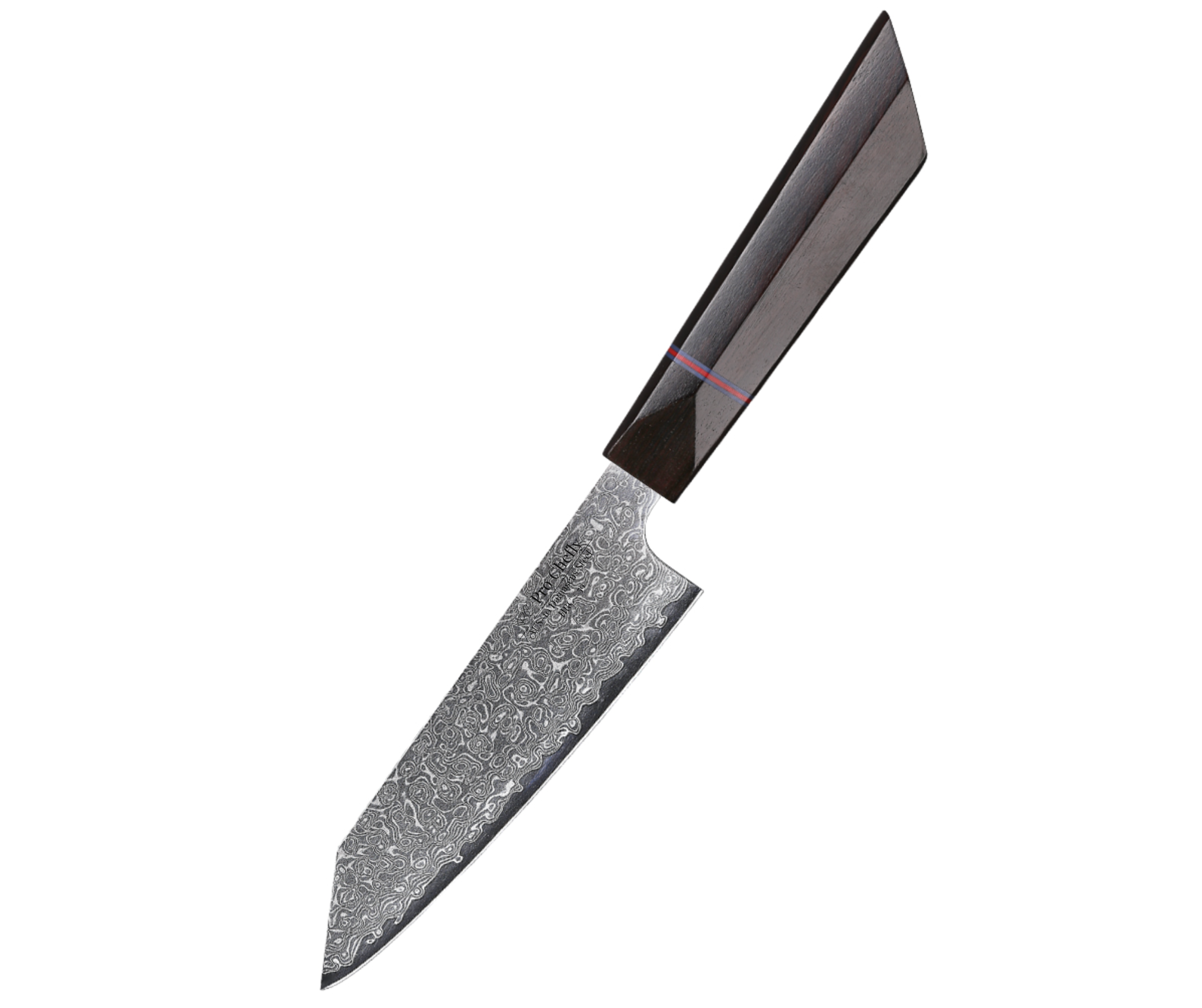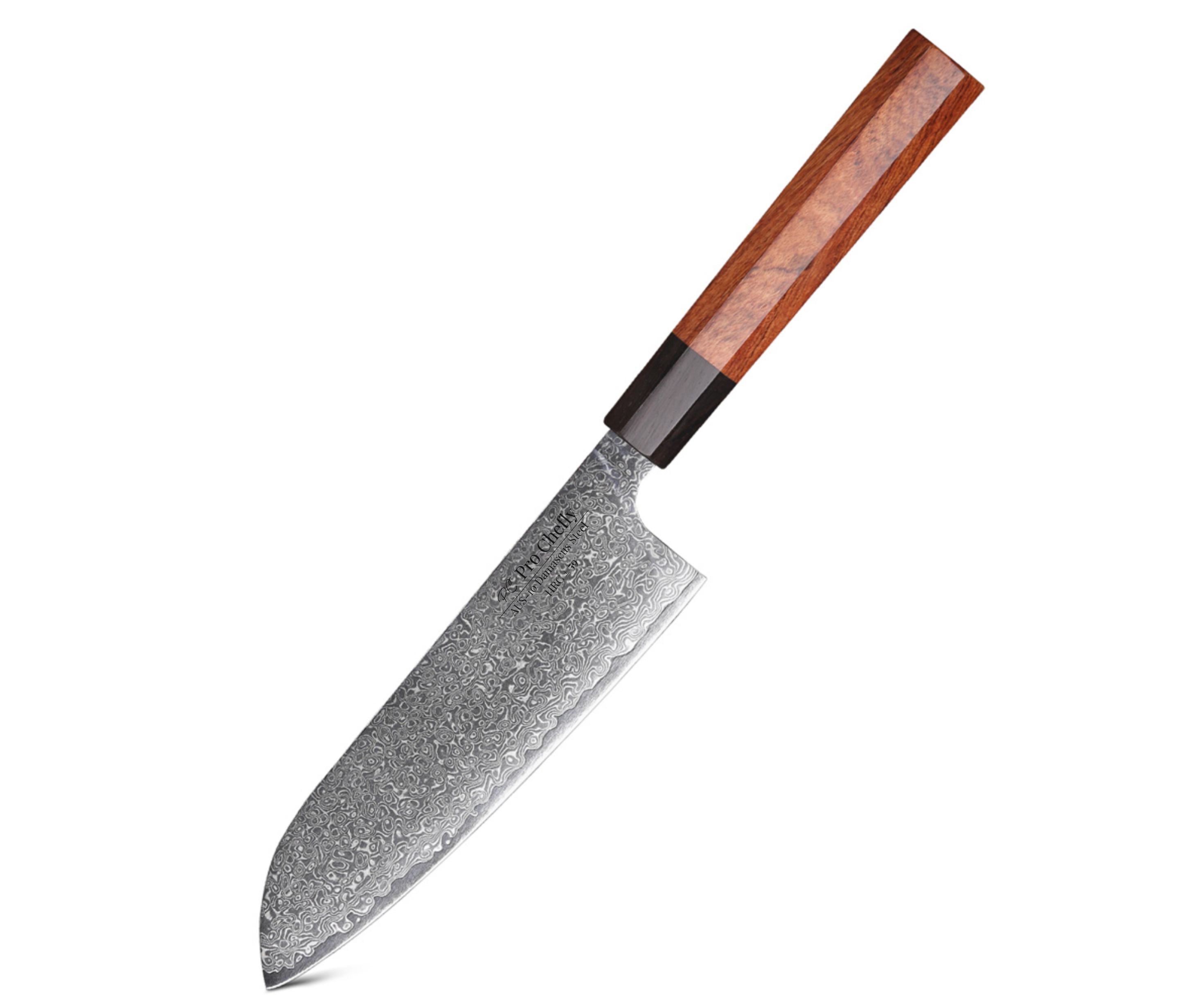Chef’s Overview
Dear Chefs, let’s be real—few things sting more than finding out that shiny “Damascus steel” knife you just bought is nothing more than an acid-etched imposter. The truth is, authentic Damascus steel carries centuries of craftsmanship, while fakes are designed to trick the eye, not elevate your cooking. Today, I’ll show you exactly how to tell the difference, why it matters, and how you can invest in blades that will serve you faithfully for years.

Japanese Damascus Steel Knives: Real vs Fake Patterns in the Market
I’ll never forget scrolling through a late-night knife sale, glass of red wine in hand, and spotting a “too-good-to-be-true” deal: a so-called Damascus chef’s knife for under twenty bucks. The swirls looked convincing in the pictures, but as any seasoned chef knows—if it looks too good to be true, it usually is. What arrived was a knife with printed waves on the blade, the steel as soft as a butter knife. That’s the trap so many fall into. Real Damascus is a marriage of beauty and performance. Fake Damascus? It’s just window dressing, like spray-painted chrome on a toy car.
Authentic Damascus Steel Explained: Craftsmanship, Layers, and Strength
So, what makes authentic Damascus steel so special? It’s all in the forging process. Real Damascus is crafted by folding layers of hard and soft steel together—think of it like laminating flavors in a perfect lasagna. The result is a blade with natural patterns that run through the steel itself, not just on the surface. You’ll see rippling waves or flowing water-like designs that are as deep as the blade goes. Compare this to fakes, which are often acid-etched or laser-printed designs. These patterns only sit on the surface and wear off faster than seasoning on a cheap pan.
Real Damascus doesn’t just look beautiful—it performs. With a VG-10 or AUS-10 core, authentic blades hold a sharp edge longer, resist corrosion, and balance flexibility with strength. That’s why chefs around the world trust Damascus steel for precision slicing. It isn’t just about looks—it’s about a blade that works with you, not against you.
How to Tell If Your Chef Knife is Real Damascus
Here’s the million-dollar question: how can you tell if your knife is authentic? First, examine the edge. Real Damascus patterns flow naturally through the blade, right down to the cutting edge, because they’re forged into the steel. If the pattern vanishes or looks printed only on the flat sides, you’re holding a fake. Second, pay attention to performance. A genuine Damascus knife will glide through a tomato without squashing it, while a fake often feels clunky, dull, or requires constant resharpening. Third, price is a clue. Authentic Damascus is an investment. If it’s being sold for the price of lunch, chances are it’s not the real deal. At Pro Chefly, we only work with authentic Japanese Damascus steel—layered craftsmanship with VG-10 cores—so you never have to wonder if what’s in your hand is genuine.
Why Authentic Damascus Steel is Worth It in Your Kitchen
Think of it this way: buying a fake Damascus knife is like picking up instant coffee when what you really wanted was a rich, slow-brewed espresso. Sure, they both look dark in the cup, but the experience couldn’t be more different. When you choose authentic Damascus, you’re choosing a blade that doesn’t just slice—it tells a story, honors tradition, and elevates every moment in your kitchen. Cooking with a true Damascus knife feels different, like having a trusted companion by your side. And once you’ve felt that balance and bite, you’ll never go back.
Knife Collections
Shop the latest in Pro Chefly Damascus Knives
Chef's Notes
Stay up to date with the latest kitchen stories and recipes

- December 05, 2025
Dear Chefs, the holidays deserve a dish that feels slow, soulful, and unforgettable — and few things capture that spirit...

- November 30, 2025
Dear Chefs, there is something unmistakably comforting about bread pudding in November — the way the custard soaks into the...

- November 25, 2025
Dear Chefs, there is something special about roasted carrots in the fall — the way they caramelize, the way their...

- November 20, 2025
Dear Chefs, there is something magical about fall stuffing, especially when pumpkin and sage join the party. The aroma alone...

- November 15, 2025
Dear Chefs, November has a rhythm of its own — a slower pace, a softer light, and a craving for...

- October 31, 2025
Dear Chefs, fall baking is a ritual — the scent of cinnamon in the air, pecans roasting low and slow,...
- Choosing a selection results in a full page refresh.
- Opens in a new window.
